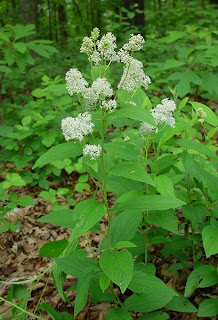TEA

Latin Name: Camellia sinensis
Alternate Names: Cha, Kukicha, Bancha, Green Tea, Black Tea
Family: THEACEAE
Parts Used: Leaf buds, young leaves.
Properties: Analgesic, Antibacterial, Antioxidant, Antitumor, Astringent, Decongestant, Diaphoretic, Diuretic, Immune Stimulant, Nervine, Stimulant, Styptic.
Internal Uses: Allergies, Arteriosclerosis, Asthma, Colds, Congestion, Cough, Depression, Diarrhea, Digestive Infections, Dysentery, Fatigue, Hangovers, Hepatitis, High Cholesterol, Migraine, Tooth Decay, Tumors
Internal Applications: Tea, Tincture.
Research is showing that some green teas may reduce stomach cancer risks. One of the ways that green and black Tea prevent dental decay is by inhibiting the enzyme Streptococcus mutans, which is responsible for plaque formation. Futhermore, Tea contains more fluoride than fluoridated water and is thus used to prevent dental decay. Green Tea has antitumor and immune stimulant properties. In lab studies, Black Tea has been shown to have antioxidant properties, but adding milk inactivates both the antioxidant properties of Black Tea and the antitumor and immune stimulant properties of Green Tea. Drink tea after a meal rich in fats to reduce arterial disease risks.
Research is showing that some green teas may reduce stomach cancer risks. One of the ways that green and black Tea prevent dental decay is by inhibiting the enzyme Streptococcus mutans, which is responsible for plaque formation. Futhermore, Tea contains more fluoride than fluoridated water and is thus used to prevent dental decay. Green Tea has antitumor and immune stimulant properties. In lab studies, Black Tea has been shown to have antioxidant properties, but adding milk inactivates both the antioxidant properties of Black Tea and the antitumor and immune stimulant properties of Green Tea. Drink tea after a meal rich in fats to reduce arterial disease risks.
Topical Uses: Insect Stings, Puffy Eyes, Sunburn, Wounds
Topical Applications: Place a compress of cooled used black Tea bags on puffy eyes, insect stings and sunburn to reduce inflammation. Make a compress of green Tea for bleeding wounds.
Culinary uses: After water, Tea is the world's most popular beverage. One can make green Tea ice cream.
Energetics: Bitter, Sweet, Dry, Cool, Warm.
Chemical Constituents: Caffeine, theophylline, theobromine, tannins (polyphenol, catechins), flavonoids (kaempferol, quercitin), fats, vitamin C, fluoride. Tannin in green Tea is epigallocatechin.
Contraindications: Excessive use may cause nervous irritability and digestive distress such as ulcers. Can be addictive. Avoid in cases of hypertension and avoid large doses during pregnancy and nursing. Adding milk to Tea helps neutralize some of the tannins, although it inactivates antioxidant actions.
Comments: Tea is considered such a divine beverage that it is named Thea, from the Greek word for goddess. Green Tea leaves are heated to prevent fermentation. Oolong Tea is partially fermented. Black Tea is dried and fermented. It is the processing that causes the wide variety of flavors amongst green and black Teas.
All Teas are bitter, sweet and drying. Green Tea and oolong Tea are cooling, while black tea is warming. Kukicha is made from the twigs, Bancha comes from the twigs and older leaves.
The species Camellia sinensis was formerly named Thea sinensis.
All Teas are bitter, sweet and drying. Green Tea and oolong Tea are cooling, while black tea is warming. Kukicha is made from the twigs, Bancha comes from the twigs and older leaves.
The species Camellia sinensis was formerly named Thea sinensis.

